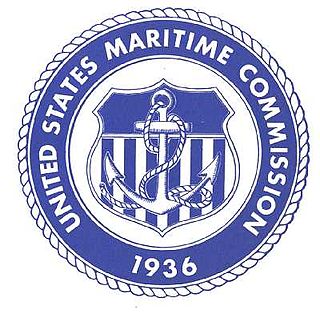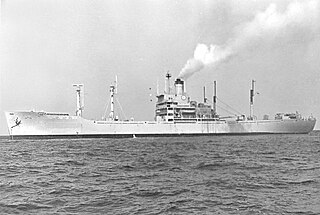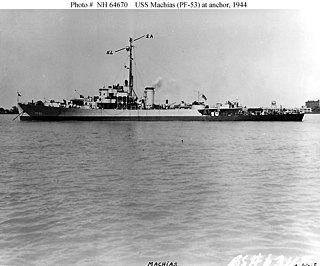The United States Navy, United States Coast Guard, and United States National Oceanic and Atmospheric Administration (NOAA) use a hull classification symbol to identify their ships by type and by individual ship within a type. The system is analogous to the pennant number system that the Royal Navy and other European and Commonwealth navies use.
The Ship-Submarine Recycling Program (SRP) is the process that the United States Navy uses to dispose of decommissioned nuclear vessels. SRP takes place only at the Puget Sound Naval Shipyard (PSNS) in Bremerton, Washington, but the preparations can begin elsewhere.

USS Illinois (BB-65) was the fifth Iowa-class fast battleship that was laid down for the United States Navy during World War II in the 1940s, although she would not be completed. The Navy had initially planned on building four of the Iowas and then developing a new, more powerful ship for what was to be BB-65. The pressing need for more warships at the outbreak of World War II in Europe led the Navy to conclude that new designs would have to be placed on hold to allow the shipbuilding industry to standardize on a small number of designs. As a result, BB-65 was ordered to the Iowa design in 1940. Illinois was laid down in December 1942, but work was given a low priority, and was still under construction at the end of World War II. She was canceled in August 1945, but her hull remained as a parts hulk until she was broken up in 1958.

The Connecticut class of pre-dreadnought battleships were the penultimate class of the type built for the United States Navy. The class comprised six ships: Connecticut, Louisiana, Vermont, Kansas, Minnesota, and New Hampshire, which were built between 1903 and 1908. The ships were armed with a mixed offensive battery of 12-inch (305 mm), 8-inch (203 mm), and 7-inch (178 mm) guns. This arrangement was rendered obsolete by the advent of all-big-gun battleships like the British HMS Dreadnought, which was completed before most of the Connecticuts entered service.

The fourth USS Decatur (DD-936) was a Forrest Sherman-class destroyer of the United States Navy in service from 1956 to 1983. She was named for Commodore Stephen Decatur USN (1779–1820). Decatur was modernised as a guided missile destroyer in the mid-1960s and re-designated DDG-31. After her decommissioning in 1983, she operated as the U.S. Navy's Self Defense Test Ship from 1994 to 2003. She was finally sunk as a target the following year.

The National Defense Reserve Fleet (NDRF) consists of ships of the United States, mostly merchant vessels, that have been mothballed but can be activated within 20 to 120 days to provide shipping during national military emergencies, or non-military emergencies such as commercial shipping crises.

The United States Maritime Commission (MARCOM) was an independent executive agency of the U.S. federal government that was created by the Merchant Marine Act of 1936, which was passed by Congress on June 29, 1936, and was abolished on May 24, 1950. The commission replaced the United States Shipping Board which had existed since World War I. It was intended to formulate a merchant shipbuilding program to design and build five hundred modern merchant cargo ships to replace the World War I vintage vessels that comprised the bulk of the United States Merchant Marine, and to administer a subsidy system authorized by the Act to offset the cost differential between building in the U.S. and operating ships under the American flag. It also formed the United States Maritime Service for the training of seagoing ship's officers to man the new fleet.

A Naval Inactive Ship Maintenance Facility (NISMF) is a facility owned by the United States Navy as a holding facility for decommissioned naval vessels, pending determination of their final fate. All ships in these facilities are inactive, but some are still on the Naval Vessel Register (NVR), while others have been struck from the register.

USS Pasco (PG-114/PF-6), a Tacoma-class patrol frigate in commission from 1944 to 1945, has thus far been the only ship of the United States Navy to be named for Pasco, Washington. She later served in the Soviet Navy as EK-12 and in the Japan Maritime Self-Defense Force as JDS Kashi (PF-3/PF-283) and as YAC-12.

USNS Dutton (T-AGS-22) was an oceanographic survey ship for the United States Navy from the late 1950s through the 1980s. She was launched as SS Tuskegee Victory in 1945, Maritime Commission hull number MCV 682, a type VC2-S-AP3 Victory ship. In her U.S. Navy service, she was named after Captain Benjamin Dutton, Jr., and was the second U.S. Navy ship named in his honor.

The Cyclone-class patrol ships are a class of coastal patrol boats, formerly in service with the United States Navy. Most of these ships, named for weather phenomenae, were launched between 1992 and 1994. The primary mission of these ships is coastal patrol and interdiction surveillance, an important aspect of littoral operations outlined in the Navy's strategy, "Forward...From the Sea." These ships also provided full mission support for U.S. Navy SEALs and other special operations forces. Several ships of the class were transferred to the U.S. Coast Guard (USCG) for a time and then later returned.

USNS Triumph (T-AGOS-4) is a Stalwart-class ocean surveillance ship formerly of the United States Navy. She was struck from the Naval Vessel Register in 1995. On 1 October 2012 the ship was disposed of by Navy title transfer to the Maritime Administration. As of May 2015, Triumph was held as a reserve asset for spare parts for sister ships General Rudder and State of Michigan.
Rescue and salvage ships are a type of military salvage tug. They are tasked with coming to the aid of stricken vessels. Their general mission capabilities include combat salvage, lifting, towing, retraction of grounded vessels, off-ship firefighting, and manned diving operations. They were common during World War II.

USS Sarasota (APA/LPA-204) was a Haskell-class attack transport that saw service with the US Navy in World War II, Korean War Era and after. She was of the VC2-S-AP5 Victory ship design type. Sarasota was named for Sarasota County, Florida.

The second USS Machias (PF-53) was a United States Navy Tacoma-class frigate in commission from 1944 to 1945 which later served in the Soviet Navy as EK-4 and the Japan Maritime Self-Defense Force as JDS Nara (PF-2), JDS Nara (PF-282) and YTE-8.
The second USS Bath (PF-55) was a United States Navy Tacoma-class frigate in commission from 1944 to 1945 which later served in the Soviet Navy as EK-29 and the Japanese Maritime Self-Defense Force, with her Japanese name reported by various sources as JDS Maki (PF-18) and JDS Maki (PF-298), and later as YTE-9.
Skenandoa (YTB-835) was a United States Navy Natick-class tugboat named for Oneida Chief Skenandoa. Skenandoa is the second US Navy ship to bear the name.
Nogalesen (YTB–777) was a United States Navy Natick-class large harbor tug named for Nogales, Arizona.













